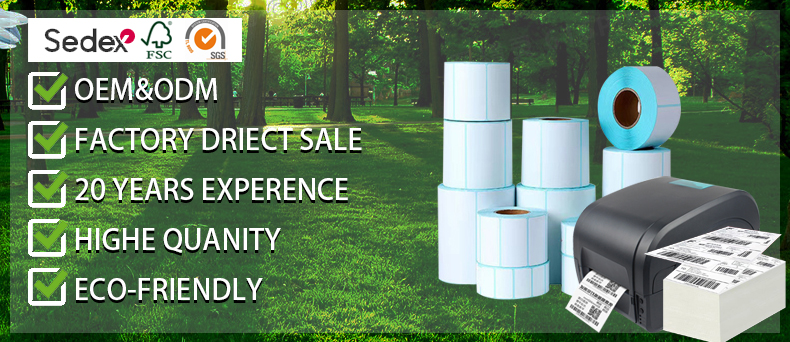

| Availability: | |
|---|---|
| Quantity: | |








In an era where sustainability and productivity go hand in hand, lineless thermal labels roll 80mm X 80 meters emerges as a game-changer for modern businesses. Unlike traditional labels with silicone-coated backing paper, our lineless thermal stickers feature a patented self-adhesive design that eliminates waste while ensuring strong adhesion. This direct thermal labels solution is engineered for seamless integration into high-volume operations, offering 40% more labels per roll than conventional options. Whether you’re tagging products in retail, tracking inventory in logistics, or labeling produce in agriculture, 80mm lineless thermal labels deliver the efficiency, durability, and eco-friendliness that today’s industries demand.

The defining feature of our lineless self-adhesive labels is their elimination of backing paper, reducing operational waste by up to 40%. This not only cuts disposal costs but also aligns with eco-friendly business initiatives—making them a top choice for brands prioritizing sustainability. Additionally, the absence of liner debris prevents printer jams and reduces printhead contamination, extending the lifespan of your thermal label printer and lowering maintenance expenses.
Our 80mm thermal labels roll boasts strong adhesion thermal labels that stick securely to curved, uneven, or textured surfaces—from cardboard boxes to electronic components. The continuous 80-meter roll design minimizes changeover time, ensuring uninterrupted printing for busy warehouses and production lines. Compatible with leading printer brands like Zebra, SATO, Honeywell, and Toshiba, these direct thermal lineless labels integrate seamlessly into existing operations without requiring costly equipment upgrades.
Crafted for reliability, our lineless thermal labels 80mm feature a white thermal paper base with a hot-melt permanent adhesive. The roll width is fixed at 80mm, while core sizes are customizable (25mm/40mm/76mm) to fit your printer’s requirements. The thermal label paper is designed for crisp, smudge-free printing, ensuring barcodes, text, and logos remain legible even in harsh environments—from humid warehouses to high-temperature manufacturing facilities.
We understand that every business has unique needs, which is why we offer tailored solutions for custom lineless thermal labels. Whether you need adjusted roll lengths, specialized adhesive strengths (for temporary or permanent use), or custom-printed logos and barcodes, our team delivers personalized results. Simply share your requirements, and we’ll create labels that align with your operational workflow and brand identity.
Retailers rely on lineless thermal price labels for fast, accurate product tagging—pre-printed with SKUs, prices, and brand logos. In logistics, these shipping label thermal paper solutions simplify pallet and package tracking, with durable adhesion that withstands transit and storage.
For agriculture, moisture-resistant thermal labels are ideal for labeling produce with origin, harvest dates, and variety information. In electronics manufacturing, the labels withstand high temperatures and chemical processes, providing clear identification for circuit boards and finished products.
| Paper type | Thermal label |
| Brand name | Huasen |
| Label width | 80mm |
| Roll length | 80mm/customized |
| Color | White |
| Core size | 25mm/40mm/76mm/customized |
| Core material | Cardboard |
| Liner Type | Lineless |
| Adhesive | Hot-melt permanent |